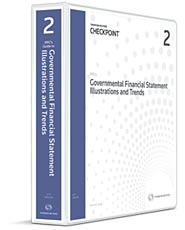
Specialties include general financial planning, career development, lending, retirement, tax preparation, and credit. Someone on our team will connect you with a financial professional in our network holding the correct designation and expertise. Our team of reviewers are established professionals with decades of experience in areas of personal finance and hold many advanced degrees and certifications. They are intended to help the management assess the effectiveness of the company’s pricing policy, stock carrying, and speed of stock turnover. Benchmarks show the trend of a ratio over time, free upgrade to quickbooks online advanced for qbo accountant users or they could be industry averages for firms of a similar size, background, or other characteristics.
The best accounting ratios for small businesses to track
In this article, I’ll discuss the different types of accounting ratios, why they’re essential for understanding financial health, and how to calculate each. A quick ratio can be used to evaluate the ability of your business to meet its immediate financial obligations. Quick ratio numbers are obtained from your balance sheet the best self-employed accounting software and compare your asset total with your liability total. Similar to the gross profit margin ratio, the profit margin ratio lets you know exactly how much you earn after subtracting all expenses, not just cost of goods sold. Your gross profit margin is one of the most important ratios you can calculate for your business, and doing so is easy. First, ratio analysis can be performed to track changes within a company’s financial health over time and predict future performance.
Return on investment is calculated by dividing the gain from the investment by the cost of the investment and then multiplying by 100. A higher liquidity ratio represents more liquidity, meaning a company can better cover its debts. The ratios track overall financial performance and allow management, investors, and key stakeholders to make data-backed decisions.
After almost a decade of experience in public accounting, he created MyAccountingCourse.com to help people learn accounting & finance, pass the CPA exam, and start their career. Ask a question about your financial situation providing as much detail as possible. At Finance Strategists, we partner with financial experts to ensure the accuracy of our financial content.
Leverage ratios
The effectiveness of new management plans, new products, and changes in operational procedures can all be determined by analyzing accounting ratios. Accounting ratios help you to decide on a particular position, investment period, or whether to avoid an investment altogether. The financial reports that accounting ratios are based on represent much of the core essence of a business.
A. General Profitability
Any value higher than 1 means more of your company’s assets are financed by debt, something to avoid if possible. The debtors’ turnover ratio indicates how efficiently debtors’ credit sales value is collected. In addition, it shows the relationship between credit sales and the corresponding receivables. The Asset Turnover Ratio indicates the revenue as a percentage of the investment.
- ROCE shows the company’s efficiency concerning generating profits compared to the funds invested in the business.
- The higher the return on equity ratio, the better the company converts its equity into profits.
- To say it another way – the ratio indicates a company’s reliance on debt rather than equity to finance assets.
- We may earn a commission when you click on a link or make a purchase through the links on our site.
Which of these is most important for your financial advisor to have?

These are just a few examples of the many accounting tools that corporations and analysts use to evaluate a company, however. Many other tools highlight different aspects of a company so you’ll want to explore and potentially use them as well. Adam Hayes, Ph.D., CFA, is a financial writer with 15+ years Wall Street experience as a derivatives trader. Besides his extensive derivative trading expertise, Adam is an expert in economics and behavioral finance.
Therefore, it is useful for inventory reordering and understanding the conversion cycle. The former may trend upwards in the future, while the latter may trend downwards until each aligns with its intrinsic value. Our writing and editorial staff are a team of experts holding advanced financial designations and have written for most major financial media publications. Our work has been directly cited by organizations including Entrepreneur, Business Insider, Investopedia, Forbes, CNBC, and many others.
Second, ratio analysis can be performed to compare results between competitors. Third, ratio analysis can be performed to strive for specific internally-set or externally-set benchmarks. Using ratio analysis will give you multiple figures and values to compare. Instead, the values derived from these ratios should be compared to other data to determine whether a company’s financial health is strong, weak, improving, or deteriorating. bookkeeping Ratio analysis can help investors understand a company’s current performance and likely future growth.
Liquidity ratios calculate how capable your company is of paying its debts. They typically measure current business liabilities and liquid assets to determine your company’s likelihood of repaying short-term debts. A basic understanding of accounting is essential to running a small business. Keeping up with various accounting ratios and formulas, as well as bookkeeping processes, can be time-consuming, tedious work.
